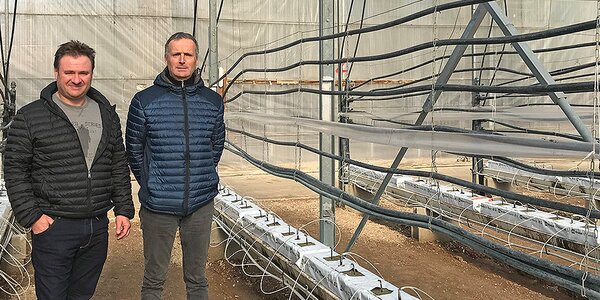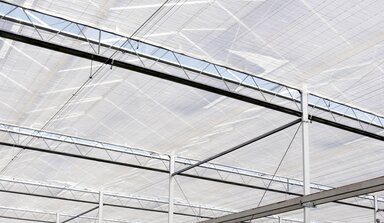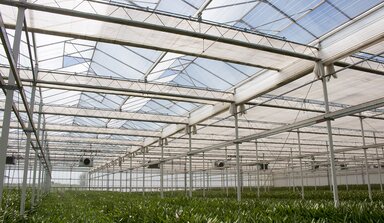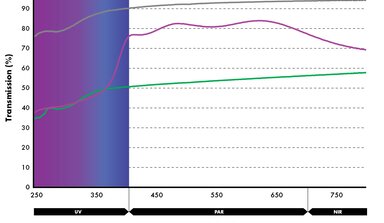80% of production is determined by the greenhouse climate
Philippe Bertolotto's tomato plants would produce virtually nothing in summer without ReduSol. But the precise moment of application and removal is crucial and identifying that time window is a challenge every year.
Of all parts of the tomato plant, the top of the plant is the most sensitive to excessively high temperatures. This is where the new leaves and flowers develop, and if this is disrupted, production will grind to a halt. The second most sensitive part of the plant is the flower itself. Too high temperatures result in small flowers, which have difficulty in proceeding to the fruit set stage because the pollen is not fertile.
“As the temperature increases, we see that process happening in our greenhouses. The crop starts to become too generative, the leaves become shorter and we have problems with fruit set and flowering. Another issue is that the bumblebees stay in their nest box if it is very hot. To keep production running smoothly you have to anticipate those moments and apply the coating on time," says Philippe Bertolotto.

Philippe Bertolotto
Applied by helicopter
His company, Earl Philippe in Eyguières, in the south of France, grows beef and vine tomatoes and coeur de boeuf (Côtelée Aumonière) in greenhouses and polytunnels. Their production is sold directly to retail channels and wholesalers.
“We apply ReduSol by helicopter in two stages. The first application, on the greenhouse, is done in early May. The polytunnels can then still cope without shading. In early June, the helicopter pilot applies a coating to the greenhouses and the polytunnels. The polytunnels are given a second layer at the end of June, the thickness depends on the weather. And if we think the coating on the greenhouse is too thin for the summer heat, we get the helicopter back in for a third application," he says.
The effect is immediately noticeable after each application. The crop needs a few days to acclimatise to the new situation. After that it regains its vigour and shows greater leaf volume and better fruit set.
Choose the right moment
“Choosing the right moment to apply the coating is vital. In the morning, the greenhouse roof could still be too wet. This makes applying the coating properly impossible. Later in the day, there is often too much wind. It is then more difficult to apply an even layer of coating," he adds.
Pinpointing the right moment to remove the coating is also important. As soon as the fruits start to have difficulty ripening, you need maximum light penetration in the greenhouse instead of shading. “Last year we applied ReduClean in mid-August, when enough rain was expected to wash off the coating. But it's a tough decision. It can still be so hot in September that the leaves get burned," Bertolotto explains. This year he is considering cleaning only one side of greenhouse roof first (the rising side) and leaving the rest of the roof until later.
Better for the crop and the staff
ReduSol creates a better greenhouse climate: it is cooler, more humid and the vents can stay closed longer. As a result, more CO2 is kept inside, which has a positive effect on production.
“80% of production is determined by the greenhouse climate” according to the grower. “With no shading it would be virtually impossible to harvest any tomatoes in summer, and the ones you could pick would be poorly coloured and de-formed. But with coating, production levels and quality are maintained. And -equally important - the staff all feel a lot better working under the coating. We apply an extra layer of ReduSol on the part of the greenhouse roof above the central path to reduce the light and heat even further there. That's makes working a lot more pleasant for us all."
Effect on whiteflies
Finally, ReduSol also plays a role in crop protection. If it gets very hot in the greenhouse, the whitefly population multiplies extremely fast. The Macrolophus bug, which preys on the whiteflies, does not like heat and would hide at the base of the crop. “Early removal of the coating in the autumn, would create problems again with whiteflies. That is also an important consideration in not choosing to remove the coating too early," says Bertolotto.
All things considered, he is satisfied with the results achieved with ReduSol. “It is a very flexible solution. And there are still possibilities for finetuning at the end of the coating season," he concludes.


